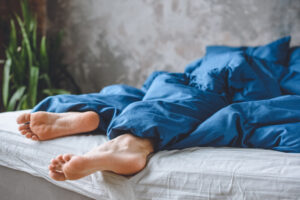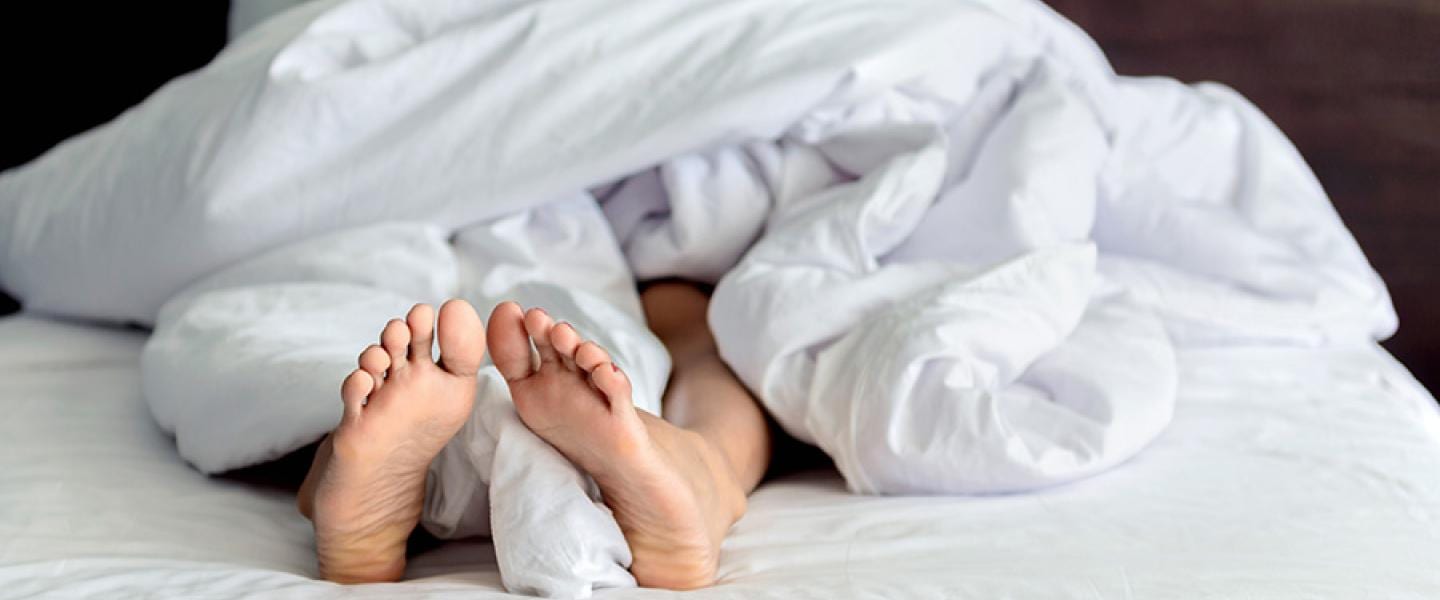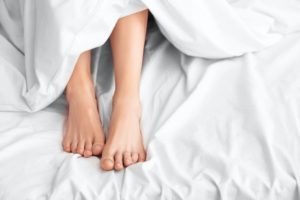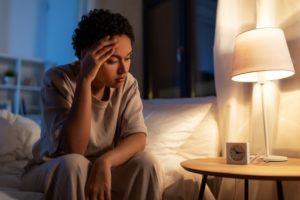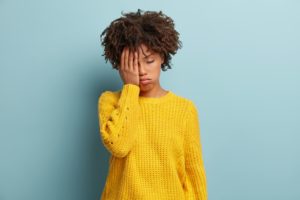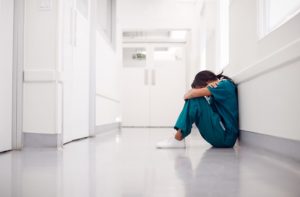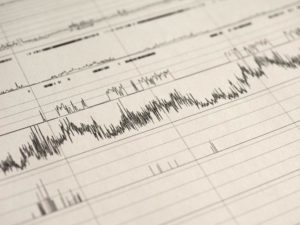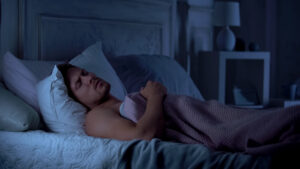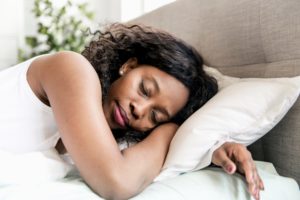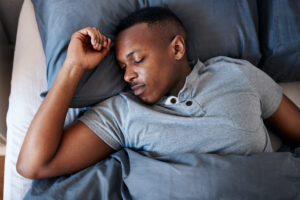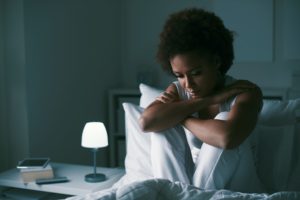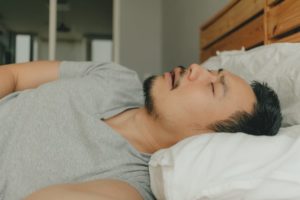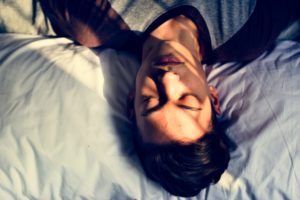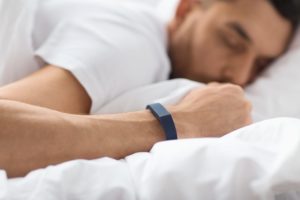Dyssomnia: Causes, Types, and Symptoms
Between 50 and 70 million American adults struggle with chronic sleep and wakefulness disorders. Dyssomnia refers to the collection of sleep disorders that negatively impact the quantity and quality of sleep. With dyssomnia, you might struggle to fall asleep at night, which is a symptom of insomnia, or feel the need to sleep excessively, which is called hypersomnolence.
Additionally, common symptoms of dyssomnia include excessive daytime sleepiness or feeling unrested when you wake up in the morning. More specific symptoms vary depending on the type of sleep disorder you are experiencing. Unlike parasomnias, dyssomnias generally do not involve irregular physical actions while asleep.
Causes of Dyssomnia
Dyssomnia can be caused by any number of factors, including sleep disorders, mental health disorders, and other medical disorders. When talking with your healthcare provider about dyssomnia, it is helpful to provide a clear picture of your habits and lifestyle. This includes any information about medications you are taking, your alcohol and drug use, and any recent life events that have changed your sleep habits. All of these experiences can impact your sleep.
Types of Dyssomnia
There are three categories of dyssomnias. These are based on the cause of the dyssomnia:
- Intrinsic sleep disorders
- Extrinsic sleep disorders
- Circadian rhythm sleep disorders
Although many sleep disorders have similar symptoms, they may require different methods of diagnosis and different treatment plans.

Intrinsic Sleep Disorders
Intrinsic sleep disorders are the group of dyssomnias caused by internal dysfunction . Intrinsic sleep disorders can stem from a malfunction of the body’s internal sleep regulation. These disorders can also be caused by other medical irregularities related to sleep.
Obstructive Sleep Apnea
People with obstructive sleep apnea experience a partial or complete collapse of the upper airway while they sleep. This respiratory sleep disorder can cause you to snore, choke, snort, and temporarily stop breathing during your sleep. In the morning, you may feel unrested and have a headache. Throughout the day, you might struggle to stay awake and experience excessive daytime sleepiness.
Diagnosis for obstructive sleep apnea typically comes from a sleep study. Your healthcare provider may then suggest a continuous positive airway pressure (CPAP) device or surgical procedure to improve breathing during sleep. Other treatments include limiting alcohol intake and weight loss.
Narcolepsy
Narcolepsy is a chronic neurological disorder in which the brain does not properly regulate the sleep-wake cycle . As a result, people with narcolepsy frequently experience excessive daytime sleepiness regardless of how much sleep they get at night. Other symptoms include cataplexy, or sudden muscle weakness and loss of control, sleep paralysis, and hallucinations.
There is no cure for narcolepsy. However, a number of drug therapies can improve alertness in people who have the sleep disorder.
Insomnia
Insomnia is a sleep disorder that negatively impacts your ability to fall asleep and/or stay asleep. Short-term insomnia lasts a month or less, often caused by life events. Chronic insomnia lasts longer than a month and may be linked to other medical conditions or lifestyle habits. As many as 33% of adults experience chronic insomnia.
Symptoms of insomnia include lying awake at night, sleeping in short bouts, waking up too early, and feeling as if you have not slept at all. Treatment options include cognitive behavioral therapy to address underlying mental health concerns and medications to relieve insomnia symptoms.
Restless Legs Syndrome
Restless legs syndrome is characterized by uncontrollable movement of the legs, arms, and sometimes other body parts. These uncontrolled movements are often accompanied by an uncomfortable crawling sensation. Symptoms typically occur when you are inactive or resting, often peaking at bedtime. The symptoms may make falling asleep difficult and can wake you out of your sleep. As a result, you feel unrested in the morning. Numerous drugs can reduce the pain from the syndrome and reduce or eliminate symptoms.
Periodic Limb Movement Disorder
Similar to restless legs syndrome, periodic limb movement disorder interrupts your sleep with unwanted, frequent movements. Periodic limb movement disorder can cause repetitive kicking or twitching of the legs and arms during sleep. These movements can happen as frequently as every 20 to 40 seconds. Due to poor sleep, you may experience excessive daytime sleepiness. The drugs prescribed to treat periodic limb movement disorder are usually the same as those used to treat restless legs syndrome.
Hypersomnia
People with hypersomnia experience frequent excessive daytime sleepiness and may fall asleep at inappropriate times during the day. They often struggle to wake up even after a long period of sleep. Naps do not always relieve the symptoms. Hypersomnia may have an underlying cause, such as narcolepsy, medication, or a medical disorder. Drug therapy may reduce the symptoms of excessive sleepiness.
Extrinsic Sleep Disorders
Extrinsic sleep disorders are dyssomnias caused by factors outside of the body, such as environment and health habits.
Poor Sleep Hygiene
Sleep hygiene is overall care for your sleep habits. Proper sleep hygiene includes:
- Going to sleep and waking up around the same time each day
- Ensuring appropriate nutrition and avoiding caffeine and alcohol before bedtime
- Regularly exercising during the day
- Establishing a bedtime routine
- Avoiding blue light from electronics in the hours before bedtime
- Creating a sleep environment with minimal distractions
Poor sleep hygiene can negatively impact both the quantity and quality of sleep you get at night. Without sufficient sleep, you may feel sleepy during the day and struggle to concentrate. A lack of sleep can also impact your ability to drive.
Nocturnal Eating Syndrome
Nocturnal eating syndrome is an eating disorder defined as consuming 25% or more of your daily calories after dinner or during the night. Additional symptoms include insomnia, the need to eat in order to fall asleep, and depressed mood at night. The syndrome appears to be related to a misalignment between the circadian rhythm and rhythm of food intake.
Cognitive behavioral therapy can assist people in managing nocturnal eating syndrome. Consult with your doctor to determine the best course of treatment.
Circadian Rhythm Sleep Disorders
Circadian rhythm sleep disorders are the result of irregularities in the circadian rhythm or misalignment of the circadian rhythm with the environment, such as the light-darkness cycle. They may cause insomnia or excessive sleepiness, as well as irritability and depression.
Shift Work Sleep Disorder
Shift work disorder causes you to be misaligned with traditional waking and sleeping hours, which can make falling asleep or staying asleep difficult. The severity of these symptoms depends on the frequency of the shift work, length of the shifts, and frequency of changed shifts.
Treatment of symptoms includes exposure to bright light when you should be awake and ensuring your bedroom is dark and quiet. You can also wear sunglasses on your way home in the daytime to prevent light exposure before you go to sleep. In more severe cases, sleep aids and wake-promoting drugs can help you manage a consistent sleep-wake schedule.
Jet Lag Disorder
When you travel quickly across more than two time zones, changes in your sleep-wake schedule can cause jet lag disorder. Experts recommend that you adjust your sleep schedule in the days prior to travel so that your sleep-wake times are more aligned with your destination’s light-dark schedule. Upon arrival, expose yourself to daylight in the morning hours and darkness in the evening hours to help your body adjust.
Delayed Sleep Phase Syndrome
Delayed sleep phase syndrome is common among adolescents. With this disorder, you tend to fall asleep later and wake later than normal. If you must wake up earlier than desired to attend class or work, you likely feel groggy or sleepy during the day. Importantly, people who experience delayed sleep-phase syndrome cannot fall asleep earlier, even when they want to. Treatment options include light therapy and melatonin supplements before bedtime.
Advanced Sleep-Phase Syndrome
The opposite of delayed sleep phase syndrome, called advanced sleep phase syndrome, causes you to fall asleep early and wake up early. This disorder is more common among older adults. Sleep masks and light-blocking goggles can help delay early wake times caused by sunlight.
Non-24-Hour Sleep-Wake Disorder
A more rare disorder, non-24-hour sleep-wake disorder, is diagnosed when a person’s sleep-wake cycle is longer than the standard 24 hours. Each day, sleep and wake times may be delayed between one and two hours. Between 40% and 60% of people who are blind have the disorder.
Dyssomnia vs. Parasomnia
Although dyssomnias and parasomnias are both groups of sleep disorders, there are key differences between the two. Dyssomnias cause either excessive sleepiness or difficulty falling and staying asleep. Parasomnias also cause a reduced amount of sleep and poor quality sleep. However, parasomnias are accompanied by unwanted behavior and physical actions during sleep.
Common parasomnias include:
- Sleepwalking
- Sleep terrors
- REM behavior sleep disorder
- Urination during sleep
Treatment for Dyssomnia
Treatments for dyssomnias vary depending on the exact sleep disorder causing the poor sleep. Some disorders require medication to relieve symptoms. Others benefit from cognitive behavioral therapy. Keeping a regular sleep-wake schedule and creating an appropriate sleep environment can also help improve sleep.
If you are not sleeping enough or are experiencing poor quality sleep, talk to your healthcare provider about dyssomnia. Share a list of your symptoms with your doctor so you can make a plan for getting the right diagnosis and treatment. With an appropriate plan, you can manage your symptoms and improve your sleep.

Still have questions? Ask our community!
Join our Sleep Care Community — a trusted hub of product specialists, sleep health professionals, and people just like you. Whether you’re searching for the perfect mattress or need expert sleep advice, we’ve got you covered. Get personalized guidance from the experts who know sleep best.
References
12 Sources
-
MedGen (n.d.). Sleep disorders, intrinsic. MedGen UID: 156250. U.S. National Library of Medicine, National Center for Biotechnology Information., Retrieved May 27, 2021, from
https://www.ncbi.nlm.nih.gov/medgen/156250 -
Strohl, K. P. (2020, September). Obstructive sleep apnea. Merck Manual Professional Version., Retrieved June 1, 2021, from
https://www.merckmanuals.com/professional/pulmonary-disorders/sleep-apnea/obstructive-sleep-apnea -
National Institute of Neurological Disorders and Stroke (NINDS), National Institutes of Health. (2020, September 30). Narcolepsy fact sheet., Retrieved on June 1, 2021 from
https://www.ninds.nih.gov/Disorders/Patient-Caregiver-Education/Fact-Sheets/Narcolepsy-Fact-Sheet#3201_1 -
MedlinePlus: National Library of Medicine (US). (2016, March 17). Insomnia., Retrieved June 1, 2021, from
https://medlineplus.gov/insomnia.html -
Bhaskar, S., Hemavathy, D., & Prasad, S. (2016). Prevalence of chronic insomnia in adult patients and its correlation with medical comorbidities. Journal of Family Medicine and Primary Care, 5(4), 780.
https://pubmed.ncbi.nlm.nih.gov/28348990/ -
Schwab, R.J. (2020, June). Merck Manual Professional Version: Periodic Limb Movement Disorder (PLMD) and Restless Legs Syndrome (RLS)., Retrieved June 1, 2021, from
https://www.merckmanuals.com/professional/neurologic-disorders/sleep-and-wakefulness-disorders/periodic-limb-movement-disorder-plmd-and-restless-legs-syndrome-rls -
National Institute of Neurological Disorders and Stroke (NINDS). (2019, March 27). Hypersomnia information page., Retrieved on June 1, 2021 from
https://www.ninds.nih.gov/Disorders/All-Disorders/Hypersomnia-Information-Page -
Pinto, T. F., Silva, F. G. C. D., Bruin, V. M. S. D., & Bruin, P. F. C. D. (2016). Night eating syndrome: How to treat it? Revista Da Associação Médica Brasileira, 62(7), 701–707.
https://pubmed.ncbi.nlm.nih.gov/27925052/ -
Zhu, L., & Zee, P. C. (2012). Circadian rhythm sleep disorders. Neurologic Clinics, 30(4), 1167–1191.
https://pubmed.ncbi.nlm.nih.gov/23099133/ -
Lunsford-Avery, J. R., & Kollins, S. H. (2018). Editorial Perspective: Delayed circadian rhythm phase: A cause of late-onset attention-deficit/hyperactivity disorder among adolescents?. Journal of Child Psychology and Psychiatry, and Allied Disciplines, 59(12), 1248–1251.
https://pubmed.ncbi.nlm.nih.gov/30176050/ -
Flynn-Evans, E. E., & Lockley, S. W. (2016). A pre-screening questionnaire to predict non-24-hour sleep-wake rhythm disorder (N24HSWD) among the blind. Journal of Clinical Sleep Medicine, 12(05), 703–710.
https://pubmed.ncbi.nlm.nih.gov/26951421/ -
Abad, V. C., & Guilleminault, C. (2003). Diagnosis and treatment of sleep disorders: A brief review for clinicians. Dialogues in Clinical Neuroscience, 5(4), 371–388.
https://pubmed.ncbi.nlm.nih.gov/22033666/


